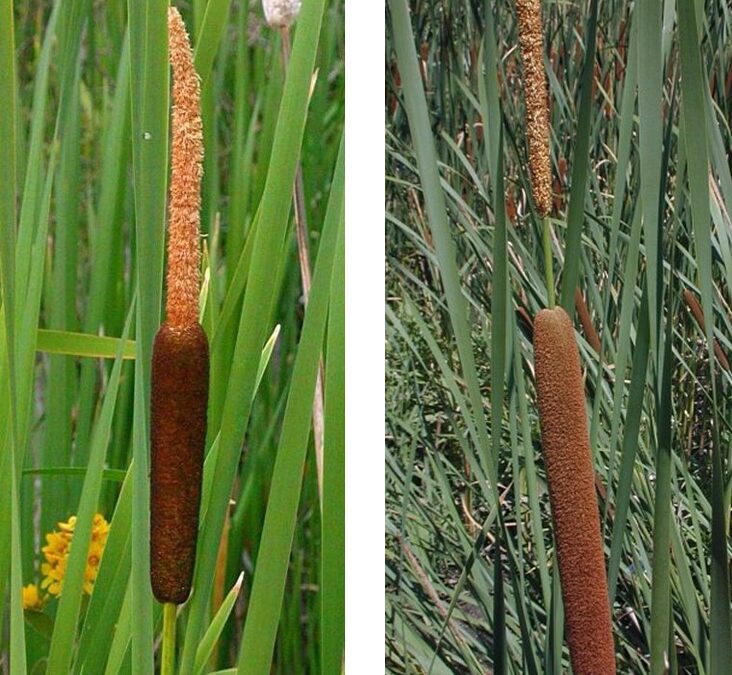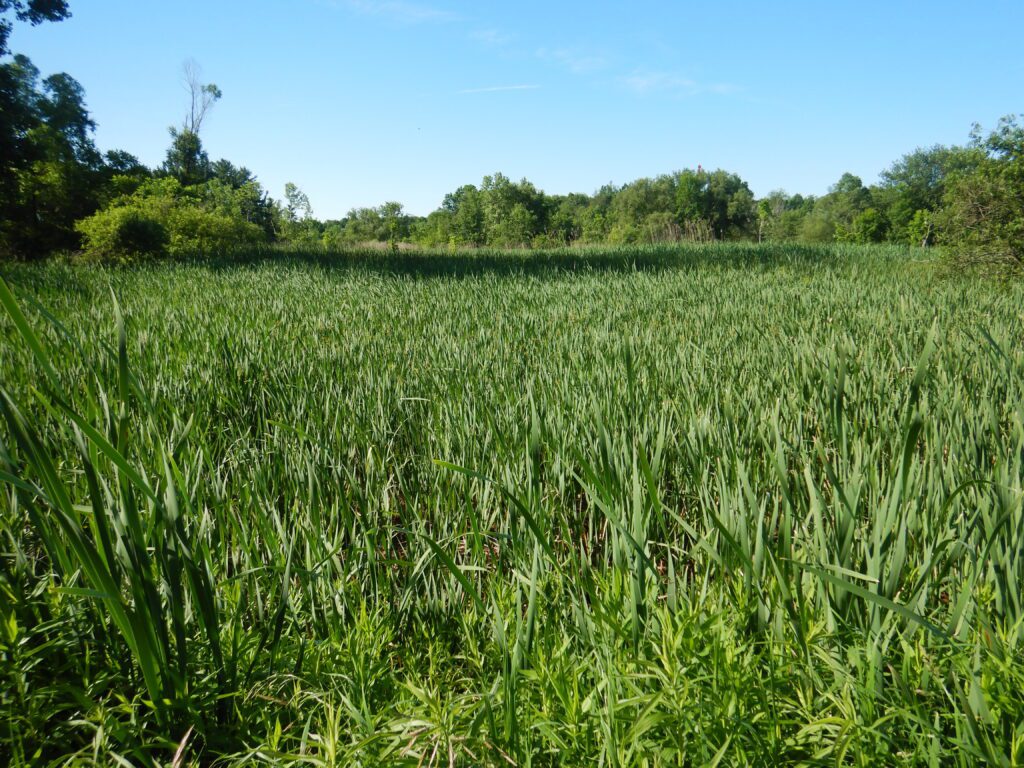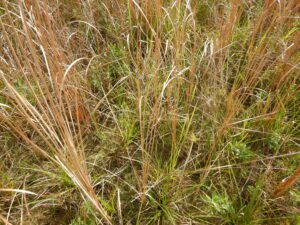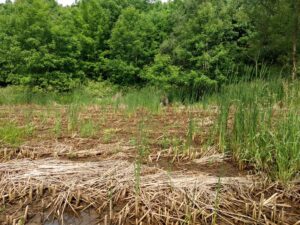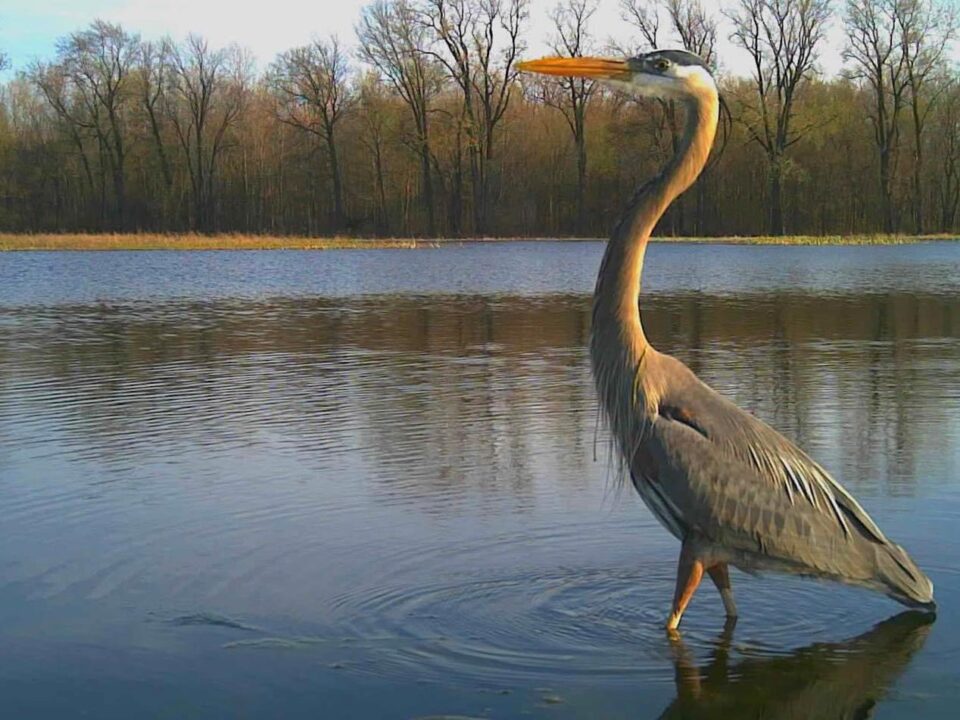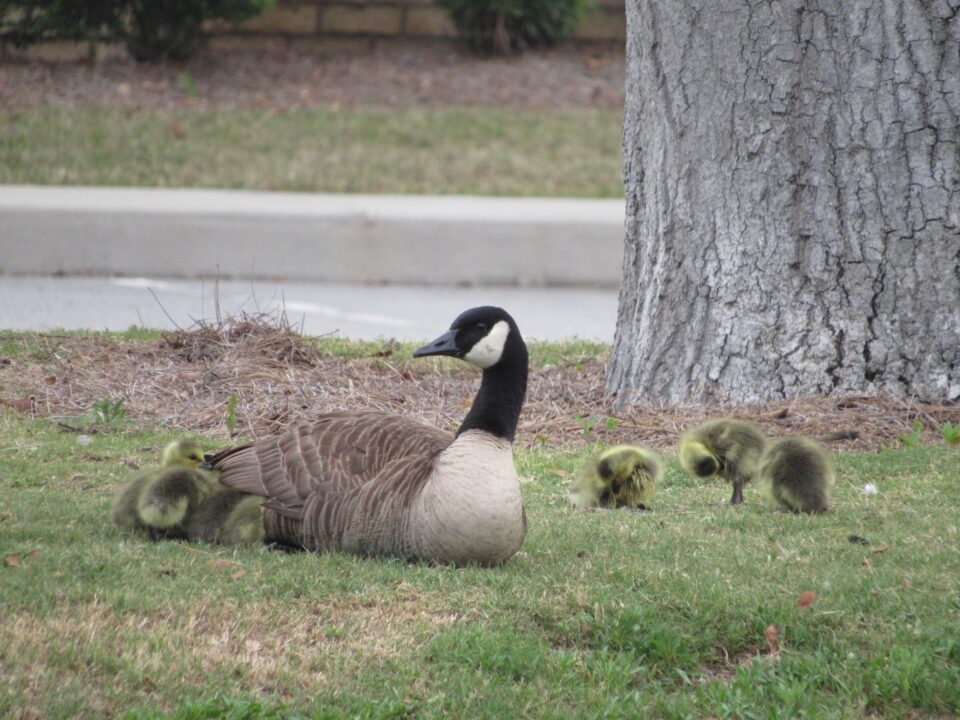
Invasive Species Awareness Week- Callery Pear
February 27, 2024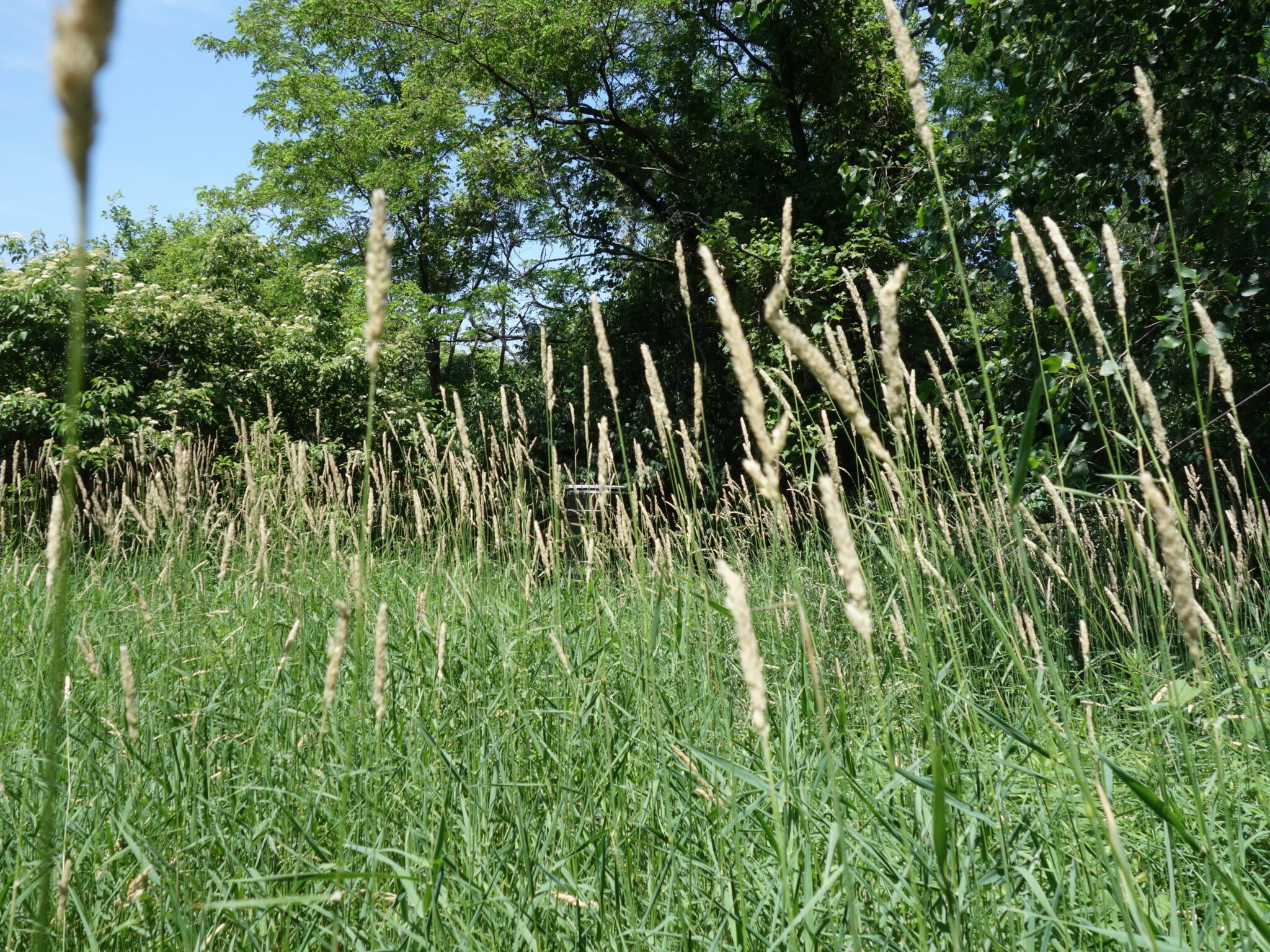
Invasive Species Awareness Week- Reed Canarygrass
March 1, 2024By: Cody Wright
March 2, 2022

Broadleaf Cattail inflorescence on left, Narrow-Leaf Cattail on right.
In Ohio, our native Cattail, Typha latifolia, is being pushed out of its niche by its invasive cousin, T. angustifolia. These two species can interbreed and produce viable hybrid offspring, T. x glauca, which also exhibit invasive tendencies. It is thought that T. angustifolia was first introduced to the U.S. along the Atlantic seaboard via the dry ballast of European ships coming into harbor.
The key characteristic that can be used to identify between these species is the gap, or lack thereof, between the male and female flower. Yes, that portion of the plant that humorously resembles a corndog is actually the flower spike that the plants use for sexual reproduction. The native cattail has no gap between the large, brown female flower and the male flower, whereas the invasive and hybrid cattails have a 1 to 4 inch gap between their flowering bodies. These seed heads create thousands of tiny, wind-dispersed seeds. Along with sexual reproduction, cattails are able to reproduce vegetatively through rhizomes that form thick mats and dense stands. All cattails can create these near impenetrable colonies , and it is even suspected that cattails have allelopathic properties, similar to those of the invasive Bush Honeysuckles. For the sake of biodiversity, management efforts should be taken to control overabundant cattails, especially the invasive species.
Mechanical thinning (or complete removal of the invasives) in “deep” water situations can be very helpful. By cutting the stalks beneath the water level the plant’s ability to exchange gasses is compromised, essentially suffocating it. For shallow water or saturated soil settings, meanwhile, herbicide application may be the best option. For a thick monoculture, broadcast foliar spraying of an aquatic-approved herbicide and non-ionic surfactant is suitable. For smaller infestations, hand-wicking of the herbicide is advisable to decrease non-target environmental impacts. One biological control method that is also known to be effective is the support of a stable muskrat population where appropriate. Muskrats graze on the shoots of the cattail, performing selective thinning. No matter which management option you choose, it is likely to take multiple years of treatment to achieve complete eradication.
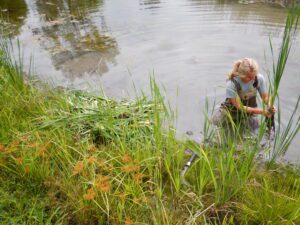
…we’ll continue tomorrow with the tale of Reed Canarygrass.



